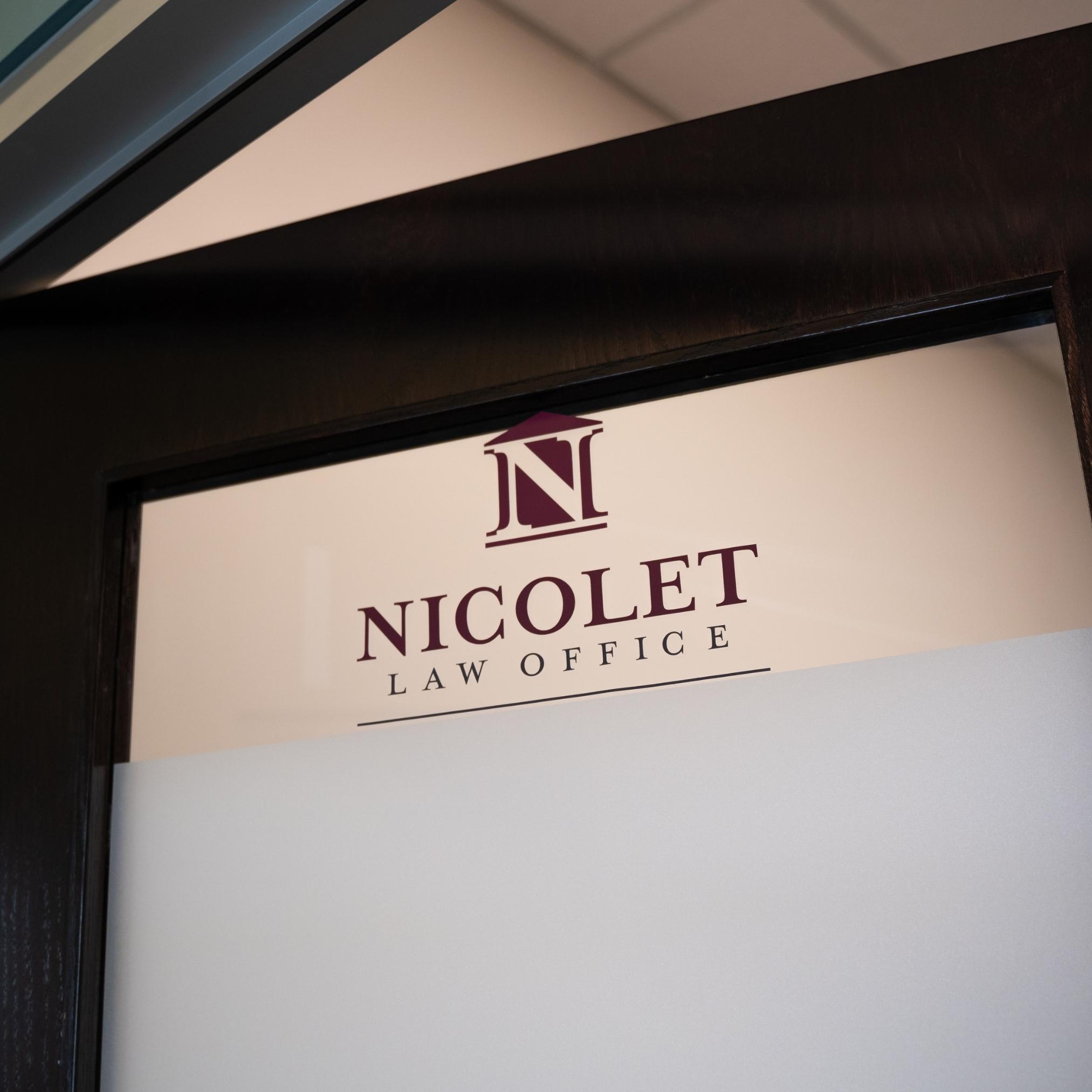In a rear-end accident, the driver who hits the vehicle in front of them is typically considered at fault. Drivers are expected to maintain a safe following distance and be prepared to stop or slow down if necessary.
However, there can be exceptions, such as if the vehicle in front abruptly stops without warning or if there are external factors like road conditions or mechanical failures. Rear-end accidents can result in damage to the vehicles involved and, in some cases, injuries to the occupants.
Every accident has many variables, even a rear-end collision. Consult a car accident lawyer in your area who can examine your accident and who understands the laws in your jurisdiction.
Nicolet Law Accident & Injury lawyers have experience in handling rear-end accident claims in the Midwest. We have offices in Minnesota, Wisconsin, and North Dakota, making it easy for you to meet with one of our lawyers near you.
Isn’t the Rear Driver Always at Fault in a Rear-End Accident?
While it's a common presumption that the rear driver is typically at fault in a rear-end accident, it's not an absolute rule. In some situations, the front driver causes a rear-end crash.
Some circumstances an experienced rear-end accident lawyer will look at include:
- Sudden lane change and unforeseeable stops: If the vehicle in front makes a sudden lane change and unexpected stop without any valid reason, and the rear driver couldn’t reasonably anticipate or avoid the collision, liability may shift.
- Multiple vehicle chain reactions: In chain-reaction accidents involving multiple vehicles, liability may be distributed among several drivers based on their actions and positions in the collision sequence. In rear-end collisions involving commercial trucks or buses, liability may involve the driver's employer or the company that owns the vehicle, especially if the driver was working at the time of the accident.
- External factors: Liability can be affected by external factors like poor road conditions, a malfunctioning traffic signal, or another driver's reckless behavior, which may contribute to the accident. For example, you can hold governmental entities or property owners liable if they have not properly maintained roadways, creating hazards like potholes or slippery conditions.
- Comparative negligence: Some states use a comparative negligence system, which means both drivers may share partial fault based on their respective contributions to the accident. Hire a lawyer who knows the law in your area to know if comparative negligence applies to your case.
You can still file a personal injury claim if you are partially to blame for a rear-end accident, depending on the laws of your state. However, the compensation you receive may be reduced based on your level of responsibility for the collision.
There are two common types of comparative negligence systems:
- Pure comparative negligence: In states that follow pure comparative negligence, you can seek compensation even if you are primarily at fault for the accident. However, the amount you receive will decrease in proportion to your percentage of fault.
- Modified comparative negligence: Some states follow a modified comparative negligence system with a threshold. In these states, you can seek compensation as long as your level of fault is less than 50 percent or 51 percent. If you are found equally or more at fault than the other party, you may not recover damages.
Ultimately, the specific facts and circumstances of an accident determine liability. While the rear driver is often found at fault, a thorough investigation by legal professionals will accurately determine liability. We have experience with these cases and know how to secure you a fair settlement.
State Laws and Jurisdiction in Rear-End Accidents
Jurisdiction determines where you can file your lawsuit. This can vary depending on where the accident occurred and where the parties involved reside. Your lawyer can identify the appropriate state or federal court where you need to file your claim.
Personal injury laws can vary significantly from one state to another. A lawyer with expertise in multiple states' laws can navigate these differences and ensure that your claim adheres to the specific regulations and statutes of the relevant jurisdictions.
State statutes of limitations for your claim set the amount of time you have to file a claim after your rear-end accident.
Nicolet Law has offices in Minnesota, Wisconsin, and North Dakota. We are familiar with the different laws governing car accident claims in different states. For example, the statute of limitations for personal injury claims in Minnesota is six years, while the statute of limitation in Wisconsin is three years. A lawyer can meet all deadlines, preventing a court from dismissing your claim due to a missed deadline.
State laws also dictate the minimum insurance coverage that drivers must carry. This can affect the amount of compensation available in your claim, especially if the at-fault driver has minimal insurance coverage.
Some states also limit the compensation you can receive for certain damages, such as non-economic damages like pain and suffering. These limits can significantly affect the value of your claim.
In some states, you can only pursue a personal injury claim if you meet a certain threshold of injury severity, state law determines. If your injuries don't meet this threshold, you need to seek compensation through your own personal injury protection insurance.
Given these variations, consult a personal injury attorney who knows the laws and regulations specific to your state. They can explain how state laws and jurisdiction may affect your case and work to ensure that you pursue the maximum compensation available to you.
PIP Insurance
Some states require you to use Personal Injury Protection (PIP) insurance coverage for your rear-end accident claim. PIP coverage typically offers compensation regardless of fault in the crash (provided the accident involves a motor vehicle).
Minnesota is a no-fault insurance state. After an accident, motor vehicle drivers must initiate insurance claims with their own insurance provider first, regardless of fault.
In these cases, you can only file a personal injury claim after exhausting your PIP coverage. An experienced personal injury lawyer can navigate this process for you.
What Types of Injuries May Be Involved in a Rear-End Accident?
Injuries in a rear-end accident depend on the speed of the collision, the size of the vehicles involved, and the use of safety features like seat belts and airbags.
Probably the most common injury in a rear-end collision is whiplash, a neck injury caused by the sudden back-and-forth motion of the head and neck upon impact. Symptoms of whiplash may include neck pain, stiffness, headaches, and difficulty moving the neck. The jolt that causes whiplash may also result in head injuries.
Despite safety features like seat belts and airbags, a vehicle occupant can still strike their head on the steering wheel, dashboard, or headrest. A blow to the head may result in concussion or even traumatic brain injury (TBI), which can have lifelong adverse effects on physical and mental health.
People involved in a rear-end accident may suffer chest injuries due to the force of the impact against the seatbelt or steering wheel. These injuries may include bruised or broken ribs. Facial injuries also can result from striking the dashboard, windshield, or airbag. These injuries can cause severe facial fractures.
Drivers and passengers involved in a rear-end collision may have soft-tissue injuries to muscles, tendons, and ligaments. Sprains and strains are common soft tissue injuries in rear-end collisions. Also, the knees can hit the dashboard during the crash, leading to contusions, strains, or fractures.
In rare cases, the force of a rear-end collision can cause internal injuries, such as organ damage or internal bleeding.
The emotional impact of a car accident can lead to anxiety, depression, or post-traumatic stress disorder (PTSD) in some individuals.
What Types of Compensation May be Available for a Rear-End Accident?
After a rear-end accident, the injured party can recover compensation, including:
- Medical expenses: Compensation for all medical costs related to the accident, including hospital bills, doctor's visits, surgery, medication, rehabilitation, and future medical expenses.
- Lost income: Reimbursement for income lost due to injuries from the accident, including both past and future lost earnings if you cannot work for an extended period.
- Pain and suffering: Compensation for the physical and emotional distress experienced because of the accident, including pain, anxiety, depression, and reduced quality of life.
- Permanent disability: Compensation for permanent injuries or disabilities that affect your ability to work or enjoy a normal life.
- Loss of consortium: Compensation for the impact the injuries have on your relationship with your spouse or family members.
- Punitive damages: In rare cases involving an at-fault driver's extremely reckless or intentional actions, punitive damages may punish the wrongdoer and deter similar conduct.
- Wrongful death damages: If a rear-end accident results in a fatality, surviving family members may recover compensation for funeral expenses, loss of financial support, and loss of companionship.
To pursue compensation, you'll typically need to file a personal injury claim with the at-fault driver's insurance company or, if necessary, initiate a lawsuit. A personal injury attorney can explain your rights, evaluate the value of your claim, and navigate the legal process to secure the compensation you deserve.
Why Should You Hire a Lawyer for a Rear-End Accident Claim?
Even though the rear driver is usually at fault in a rear-end accident, hire a lawyer to investigate your insurance claim. In most accident insurance claims, you need someone in your corner experienced in negotiating with the insurance company on your behalf.
The big insurance companies have a team of lawyers working on their behalf. An attorney with experience in personal injury law can navigate the complex legal process and protect your rights.
A lawyer can assess the full extent of your damages, including medical bills, lost wages, and pain and suffering, to maximize your potential compensation. Lawyers are skilled negotiators and can work with insurance companies to secure a fair settlement on your behalf.
Your legal team can gather evidence, such as witness statements and accident reports, to build a strong case in your favor. Lawyers can handle the paperwork, deadlines, and legal procedures, reducing your stress and ensuring your case progresses smoothly. If necessary, a lawyer can represent you in court, advocating for your interests before a judge and jury.
Most personal injury lawyers work on a contingency fee basis, meaning you don't pay unless they win your case, making legal representation accessible. Overall, a lawyer can navigate the complexities of a rear-end accident claim and increase your chances of obtaining a fair and just settlement.
Why Choose Nicolet Law Accident & Injury Lawyers for Your Rear-End Accident Claim?
Nicolet Law Accident & Injury lawyers have experience in handling claims involving rear-end accidents in the Midwest, with offices throughout Minnesota, Wisconsin, and North Dakota. We know the laws around these claims and how they differ from state to state.
We are part of these communities and take your rear-end collision claim personally. Let us help you regain your peace of mind by working to hold those responsible for your injuries accountable.

Our personal injury attorneys knows how to work with insurance companies to make sure you don’t get the runaround. It is our mission to represent you to get the best settlement to compensate you for your injuries.
Contact us today for your free case evaluation. We have more than 20 offices throughout Wisconsin, Minnesota, and North Dakota, making it easy for you to meet with one of our lawyers near you. We're ready to help you!
